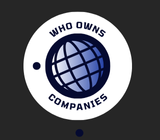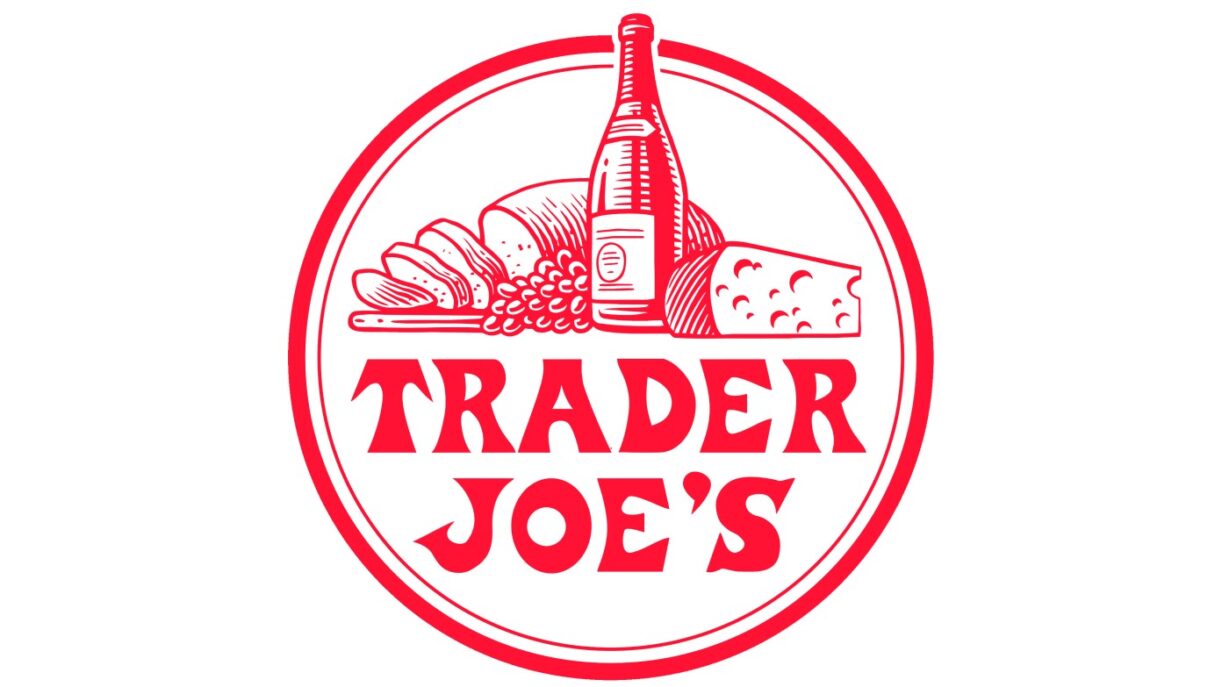In the world of grocery shopping, few brands evoke the same sense of adventure and affordability as Trader Joe’s. With its quirky product names, nautical-themed stores, and an ever-rotating selection of unique finds, Trader Joe’s has carved out a devoted following across the United States. But behind the Hawaiian-shirt-wearing crew members and the shelves stocked with everything from frozen mandarin orange chicken to unexpected wine bargains lies a fascinating story of ownership. If you’ve ever wondered, “Who owns Trader Joe’s?” you’re not alone. This privately held empire is tied to a reclusive German family dynasty, a split grocery legacy, and a business model that prioritizes privacy over public scrutiny. In this comprehensive guide, we’ll dive deep into the history, structure, and implications of Trader Joe’s ownership, exploring how it all connects to the global grocery giant Aldi Nord.
Understanding who owns Trader Joe’s requires peeling back layers of family feuds, strategic acquisitions, and a commitment to staying under the radar. As of 2025, Trader Joe’s remains a private company, wholly owned by the Albrecht family through a network of foundations. This setup allows the chain to operate independently while benefiting from the financial muscle of its European parent. Far from the publicly traded giants like Walmart or Kroger, Trader Joe’s ownership model emphasizes long-term stability, low prices, and innovation without the pressures of quarterly earnings reports. Let’s start at the beginning: the birth of a brand that would redefine American specialty grocery shopping.
The Origins of Trader Joe’s: From Pronto Markets to South Seas Adventure
The story of Trader Joe’s ownership can’t be told without first meeting its founder, Joe Coulombe. Born in 1930, Coulombe was a visionary entrepreneur with a keen eye for emerging consumer trends. In 1958, he acquired a small chain of convenience stores in the Greater Los Angeles area called Pronto Markets. These were straightforward spots selling everyday essentials, but Coulombe quickly realized they were too similar to behemoths like 7-Eleven. He described the competition as an “800-pound gorilla” that would crush smaller players without differentiation.
By the mid-1960s, Coulombe spotted a golden opportunity. The introduction of the Boeing 747 jumbo jet was democratizing international travel, exposing more Americans—particularly the “over-educated and underpaid” college graduates—to global cuisines and exotic flavors. Inspired by a Caribbean vacation and the tiki bar craze sweeping the U.S., Coulombe rebranded his stores as Trader Joe’s in 1967. The name was a playful nod to Trader Vic’s, the iconic Polynesian-themed restaurant chain. The first official Trader Joe’s opened in Pasadena, California, that year, and it still operates today as a living museum of the brand’s humble beginnings.
The stores embraced a South Seas motif: Hawaiian shirts for employees, nautical decor, and a focus on affordable gourmet imports. Coulombe stocked his shelves with wines, cheeses, and international snacks that were rare in mainstream supermarkets at the time. This wasn’t just grocery shopping; it was an experience, blending fun with value. By emphasizing private-label products—about 80% of inventory even today—Trader Joe’s could offer high-quality items at rock-bottom prices, skipping the middleman and negotiating directly with suppliers.
Under Coulombe’s leadership, Trader Joe’s expanded steadily along the West Coast, reaching about a dozen stores by the late 1970s. Annual sales climbed, but the chain remained regionally focused. Coulombe’s philosophy was simple: cater to curious, budget-conscious adventurers who wanted more than bland staples. Little did he know that his creation would soon catch the eye of international investors, leading to one of the most intriguing ownership transfers in retail history.
The Albrecht Family and the Aldi Split: A German Grocery Legacy
To grasp who owns Trader Joe’s today, we must travel back to post-World War II Germany and the Albrecht family. In 1946, brothers Karl and Theo Albrecht took over their mother Anna’s small food store in Essen, transforming it into a discount grocery powerhouse. They coined the name “Aldi” from “Albrecht Diskont” (Albrecht Discount) and pioneered the no-frills supermarket model: limited SKUs, basic fixtures, and everyday low prices. By the 1950s, Aldi had exploded across Germany, becoming synonymous with efficiency and thrift.
But sibling rivalry struck in 1960 over a seemingly trivial issue—whether to sell cigarettes in stores. Theo favored expansion into tobacco; Karl worried it would attract shoplifters. The disagreement led to a dramatic split: the business divided into Aldi Nord (Theo’s domain, covering northern Germany) and Aldi Süd (Karl’s, in the south). The brothers agreed on a non-compete clause: Aldi Nord wouldn’t expand south of the Ruhr River, and Aldi Süd stayed north of the Danube. This geographic truce preserved the family empire while allowing independent growth.
Both branches thrived internationally. Aldi Süd entered the U.S. market in 1976 with its first store in Iowa, eventually becoming the Aldi we know today with over 2,000 locations across 39 states as of early 2025. Aldi Nord, however, took a different path abroad, focusing on Europe (Belgium, France, the Netherlands, Poland, Portugal, and Spain) before eyeing America through a unique acquisition.
The Albrecht brothers embodied extreme frugality, a trait that permeates both Aldi and Trader Joe’s. Theo, for instance, wore ill-fitting suits, sharpened pencils to stubs, and once haggled with his own kidnappers during a 1978 abduction. Karl preferred simple potato-based meals. This mindset—waste nothing, value everything—fueled their success and explains the chains’ enduring low-price ethos.
The 1979 Acquisition: How Aldi Nord Claimed Trader Joe’s
By 1979, Trader Joe’s had proven its concept but faced scaling challenges. Coulombe, nearing burnout, sought a buyer who could preserve the brand’s quirky independence. Enter Theo Albrecht of Aldi Nord. Impressed by Trader Joe’s efficient private-label system and U.S. foothold, Theo saw it as the perfect entry into the American market without directly competing with Aldi SüD’s expansion.
Theo purchased the chain through a family trust for an undisclosed sum (estimated in the tens of millions). Coulombe stayed on as CEO until 1989, ensuring a smooth transition. This move made Trader Joe’s a wholly owned subsidiary of Aldi Nord, but with deliberate separation: no shared branding, supply chains, or operations. Aldi Nord’s U.S. presence became Trader Joe’s eclectic vibe, contrasting Aldi SüD’s stark efficiency.
Post-acquisition, Trader Joe’s flourished under new leadership. John Shields, Coulombe’s successor, guided expansion into Arizona and Massachusetts. Dan Bane took over in 2001, overseeing national growth to nearly 600 stores. In July 2023, Bane retired, passing the reins to Bryan Palbaum as CEO, with Jon Basalone as vice-CEO and president. As of July 2025, Trader Joe’s boasts 608 stores across 43 states and Washington, D.C., with regular additions.
Ownership Structure in 2025: Foundations, Privacy, and Family Control
Today, who owns Trader Joe’s boils down to the Albrecht family’s intricate web of private foundations. After the brothers’ deaths—Karl in 2014 at 94, Theo in 2010 at 88—control shifted to avoid inheritance taxes and infighting. Aldi Nord, including Trader Joe’s, is held by three foundations: Markus-Stiftung, Jacobus-Stiftung, and Lukas-Stiftung. These entities, based in Germany, ensure the family’s wealth (estimated at over $50 billion) remains intact and tax-efficient.
Aldi SüD operates under the Siepmann Foundation and others. This “double foundation model” keeps both branches private, debt-free, and focused on long-term growth. Trader Joe’s, as a private entity, discloses minimal financials but reportedly generated $16 billion in revenue in 2023, underscoring its profitability without public accountability.
This structure benefits Trader Joe’s immensely. Free from shareholder demands, the company invests in employee perks (starting pay around $15-18/hour, plus benefits) and innovation. It ranks highly on “best places to work” lists—number 14 by Glassdoor in 2020—and avoids the scandals plaguing public peers. No IPO is planned; privacy is paramount.
Trader Joe’s Business Model: Private Labels, Low Prices, and Cult Status
What sets Trader Joe’s apart—and ties back to its ownership—is its relentless focus on value. With only 4,000 SKUs (versus 50,000 in typical supermarkets), stores stay nimble, testing products like seasonal pumpkin spice everything or viral mandarin orange chicken. Eighty percent are private labels, sourced globally but unnamed to suppliers for leverage.
This mirrors Aldi Nord’s efficiency but with a whimsical twist: “Trader José’s” for Mexican items, “Trader Giotto’s” for Italian. Prices stay low—no coupons needed—thanks to direct sourcing and minimal marketing (no TV ads; word-of-mouth rules). In 2025, amid inflation, Trader Joe’s shines: a $2.99 bottle of Charles Shaw wine (“Two-Buck Chuck”) remains a staple.
Sustainability efforts abound, like cage-free eggs nationwide by 2025 and eco-friendly packaging. Yet challenges persist: a January 2025 animal welfare scandal with supplier Petaluma Poultry led to protests and lawsuits, highlighting supply chain vulnerabilities. Trader Joe’s responded swiftly, terminating the contract and pursuing legal action against disruptions.
Debunking Myths: Trader Joe’s vs. Aldi—Related but Distinct
A common query: Is Trader Joe’s owned by Aldi? Yes and no. It’s owned by Aldi Nord’s parent foundations, not Aldi SüD, which runs U.S. Aldi stores. They share no operations, recipes, or logistics—despite online myths. U.S. Aldi (SüD) focuses on basics; Trader Joe’s on discovery. Both embody Albrecht frugality, but they’re siblings, not twins.
This distinction matters for shoppers: Aldi’s 2,000+ stores chase volume; Trader Joe’s 608 curate experiences. No shared products—those “Trader Joe’s at Aldi” rumors are baseless.
The Future of Trader Joe’s Ownership: Steady Expansion, No Public Leap
Looking ahead, Trader Joe’s ownership shows no signs of change. The Albrecht foundations prioritize stability, funding organic growth like the January 2025 Sacramento logistics center acquisition. With real estate holdings (over 5,300 buildings via foundations) and debt-free status, there’s little need for public markets.
Expansion continues: more stores in underserved states, perhaps deeper into the South despite Aldi SüD overlap. Employee-centric policies—fearless experimentation, crew input—sustain loyalty. As CEO Palbaum noted in recent interviews, “We’re not chasing scale; we’re chasing joy.”
In a retail landscape dominated by giants, Trader Joe’s ownership model proves private can be powerful. It honors Coulombe’s vision while leveraging Albrecht discipline, delivering magic in every aisle.
Conclusion: Why Ownership Matters for Shoppers
Who owns Trader Joe’s? Ultimately, it’s the shadowy yet savvy Albrecht family, via Aldi Nord’s foundations. This private perch lets the chain innovate freely, keeping prices low and vibes high. For fans, it’s reassurance: no corporate overlords dictating shelf space. Next time you snag a surprise find at Trader Joe’s, tip your hat to a German legacy that’s quietly revolutionizing American groceries.
References
- Wikipedia. (2025). Trader Joe’s. https://en.wikipedia.org/wiki/Trader_Joe%27s
- Wikipedia. (2025). Aldi. https://en.wikipedia.org/wiki/Aldi
- Food Republic. (2025). Who Owns Trader Joe’s & Where Did It Get Its Name?. https://www.foodrepublic.com/1944581/who-owns-trader-joes/
- Aldi Reviewer. (2025). Who Owns Trader Joe’s: Are Aldi and Trader Joe’s the Same Company?. https://www.aldireviewer.com/aldi-and-trader-joes-are-they-the-same-company/
- PitchBook. (2025). Trader Joe’s 2025 Company Profile. https://pitchbook.com/profiles/company/89133-40

